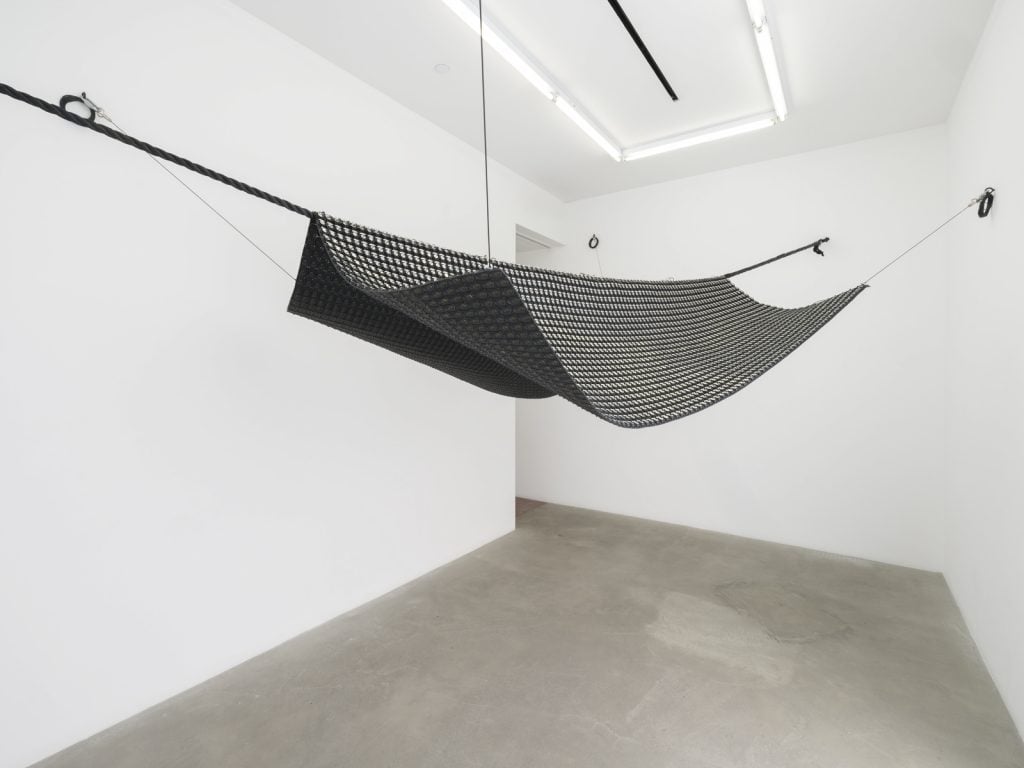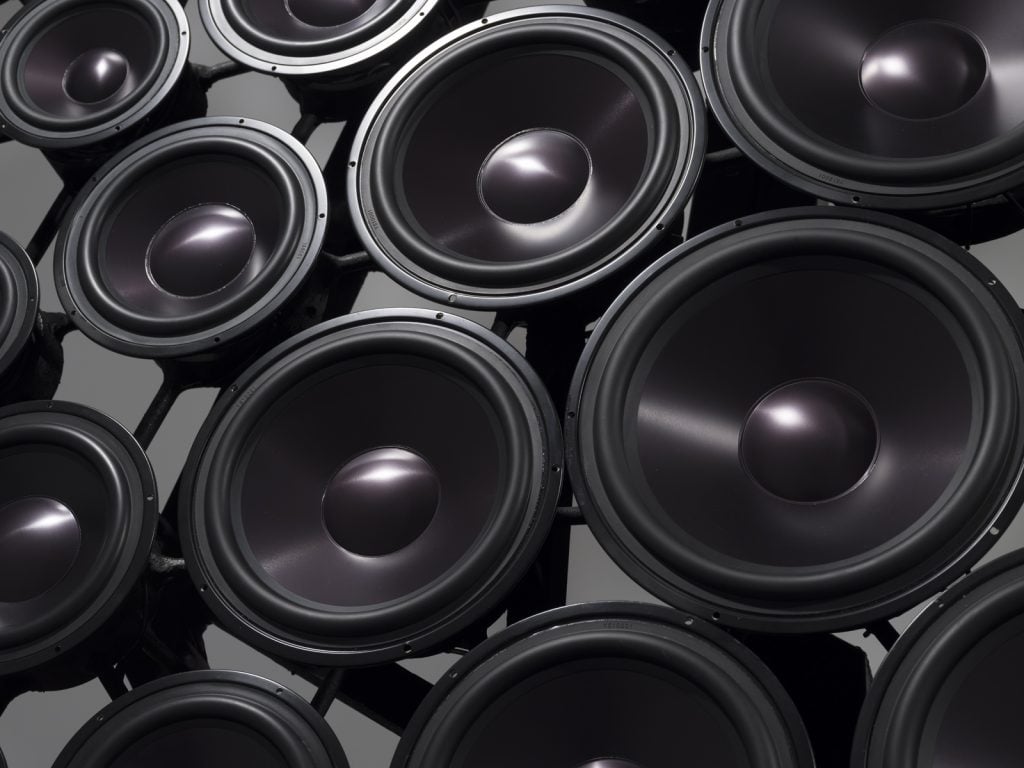It’s a beautiful day in Los Angeles when I reach Jónsi over Zoom. Standing on the balcony of his apartment, the musician and artist spins his camera around to show me his view of the city, its perennially deep blue skies foregrounded by palm trees. “It’s nice and sunny,” he informs me, with some understatement.
The scene is the antithesis to Jónsi’s native Iceland—with its “darkness and depression”—and perhaps a marked contrast to the music and art he’s turned out. As the frontman of art-rock band Sigur Rós, he’s shepherded haunting, almost hermetic, soundscapes, tinged with his otherworldly voice and cello-bowed guitar. And as an artist, he’s crafted environments meant to envelop viewers, transporting them to spheres not always sunlit.
His move to L.A. about eight years ago, he told me, hasn’t really shifted his perspective or approach to art-making: “When I first came to L.A., I could never understand working in windowless studios that are like black boxes. But now, I understand that you have to isolate yourself from paradise.”
Jónsi’s new works, now on view at Tanya Bonakdar Gallery in L.A., don’t stray far from that black box. Chief among them is Vox (2023), an installation that invites viewers to sit in a darkened room, leavened only by thin LED screens displaying minimalistic visualizations of light frequencies and the sound of Jónsi’s own singing voice. Sort of: the artist’s vocalizations have also been pitched down, reversed, stretched, synthesized, and sampled with help from A.I.—all the better to probe the essence of the human voice.

Jónsi, Vox (2023). Courtesy the artist and Tanya Bonakdar Gallery, New York / Los Angeles.
“The voice is the most primitive and most beautiful instrument there is. That mid-range frequency of, like, 1,000 hertz is the clearest to people. I just wanted to celebrate that,” he explained of the work. “Basically, every sound in the installation is made by the human voice, or it’s only my voice… egomaniac.” (Jónsi, by the way, has a sense of humor.)
Voice, in fact, serves as a through line for his other pieces—if not the production of sound, then the act of listening. Silent Sigh (2023) is a matrix of 100 speakers that variously vibrate and rebound as direct currents and a subtle drone weave through them. Meanwhile, Var (2023) presents a ceiling-hung blanket threaded with thousands of tiny directional speakers, which emit ASMR-like sounds of dripping, shuffling, and crinkling.

Jónsi, Var (2023). Courtesy the artist and Tanya Bonakdar Gallery, New York / Los Angeles.
The latter, Jónsi said, was meant to evoke a “safe place.” Under its canopy, visitors listening to the gentle soundscape can imagine themselves by a crackling fire, maybe, or hearing rain on a roof. “When you put these sounds together, it’s comforting,” he added, “but it’s also kind of creepy.”
Realizing these pieces was also a technical venture. Jónsi credited creative engineer Damon Dorsey for building the LED screens for Vox and the speaker web for Silent Sigh (Dark); and recalled how he and his boyfriend spent hours upon hours hand-soldering speakers and wires into Var. But perhaps one the most critical aspect of these pieces, while similarly scientific, remains unseen: scent.

Jónsi, Var (2023) (detail). Courtesy the artist and Tanya Bonakdar Gallery, New York / Los Angeles.
For about a decade, Jónsi has involved himself in perfumery, attempting to distill what he called “good breathable perfume,” while creating scents for his artworks. Var, for instance, is accompanied by the warm smell of freshly cut grass and rain, and Vox sports a more earthy fragrance with notes of vetiver grass (his favorite scent) and root-based essential oils.
In his telling, the aromatic arts remain his one relentless pursuit: “I think perfumery is the ultimate, most depressing thing that is out there. It’s a bottomless pit of disappointment. You do hundreds and hundreds of experiments and nothing works. It is extremely hard, probably the hardest thing I’ve done in my life.”
But for an artist with a broader project of immersion, scent, along with sight and sound, have been indispensable. His 2021 work Hrafntinna (Obsidian), a tribute to Reykajik’s Fagradalsfjall volcano, brought together a wall of 200 speakers, choral arrangements, and the smell of fossilized amber. Earlier this year, FLÓÐ (2023), unveiled at the National Nordic Museum in Seattle, paired field recordings with the scent of seaweed within a foggy environment.
Creating these artworks, said Jónsi, who was admitted into but never attended art school, has been far more challenging than his work in music. There are the endlessly practical elements of art, for one, from how one realizes a piece to the matter of storing or shipping it. For another, the unspoken communication between the members of Sigur Rós, he added, translates differently in his art practice.
“Coming from a musical background, you let everything just flow through you and then magic happens,” he explained. “But art is the opposite. Everything is really conceptualized and has to have some genius idea behind it. But it’s also made me think a lot about the stuff I’m doing, which is interesting to me.”

Jónsi, Silent Sigh (Dark) (2023) (detail). Courtesy the artist and Tanya Bonakdar Gallery, New York / Los Angeles.
Still, he acknowledged that his roots in music have shaped the direction of his art, fueling his desire to bring the “invisible magic” of a live show, with its sound and light elements, to the gallery. “You want to enhance people’s senses. You want to trigger something and make them feel more,” he said.
It’s an experience that Jónsi himself is not immune to.
“With an artwork like Vox, with 52 speakers, it’s like surround sound. This is hard to experience when you play live music,” he said. “So, this gallery thing has really helped me to enjoy that experience of just being immersed in audio and sound. It’s a different output.”
“Jónsi: Vox” is on view at Tanya Bonakdar Gallery, 1010 N Highland Avenue, Los Angeles, California, through February 3, 2024.
More Trending Stories:
Art Dealers Christina and Emmanuel Di Donna on Their Special Holiday Rituals
Stefanie Heinze Paints Richly Ambiguous Worlds. Collectors Are Obsessed
Inspector Schachter Uncovers Allegations Regarding the Latest Art World Scandal—And It’s a Doozy
Archaeologists Call Foul on the Purported Discovery of a 27,000-Year-Old Pyramid
The Sprawling Legal Dispute Between Yves Bouvier and Dmitry Rybolovlev Is Finally Over
Follow Artnet News on Facebook:
